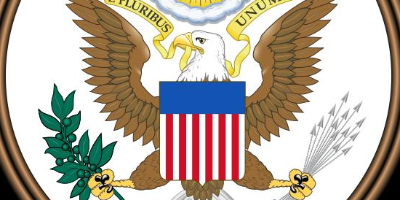Second American Party System (1 ene 1828 año – 30 mayo 1854 año)
Descripción:
The Second American Party System consisted of the Democratic Party (headed by Andrew Jackson) and the Whig Party (headed by Henry Clay, supported by John C. Calhoun and Daniel Webster). The two parties formed over a split in the Democratic-Republican Party. Andrew Jackson, enraged by the results of the 1824 election, broke off from the party and formed the Democratic Party. His opponents formed the National Republican Party as an antithesis to Jackson and soon merged with the Anti-Masons to form the Whig Party. The Whigs got their name from the British party of the same name, who supported the Parliament over the monarch. Clay called his party the Whigs because he believed Jackson acted like a (tyrannical) king during his presidency, such as by making frequent use of his veto power. The system lasted until 1854 when the Whigs broke apart due to the issue of slavery. Both parties were fairly equal in Congress, but the Whigs only got two presidents elected, both of whom died in office in their first term. People started to become more partisan during this period, as well as frequently turning up in elections, with the period seeing averages of 70-80% voter turnout starting in 1840.Democratic Party
-5 presidents
-executive supremacy
-opposed banks, paper money, tariffs and corporations (economically conservative)
-traditional party
-pro-expansion
-universal white male suffrage
-supported agrarianism, slavery, states' rights
-supporters included farmers, people from rural areas, Westerners, urban immigrants, and Catholics: the common man
Whig Party
-4 presidents (2 elected)
-legislative supremacy
-supported banks and corporations
-modern party
-anti-expansion
-believed government should promote economic growth
-wanted tariffs on manufactured goods, education, moral reform, and road and canal construction
-supported urbanization, industrialization, federal rights
-supporters included conservative Protestants, the wealthy, businessmen, plantation owners
Añadido al timeline:
fecha:
1 ene 1828 año
30 mayo 1854 año
~ 26 years
